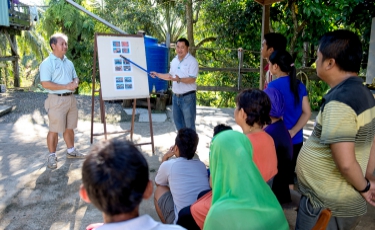Reducing Greenhouse Gas Emissions

Wilmar monitors its greenhouse gas (GHG) emissions and is constantly looking for ways to reduce its carbon footprint in our plantation and industrial operations. We constantly strive to adopt best practices to reduce the carbon footprint in our palm oil mill operations. An approach taken is to build methane capture facilities at our palm oil mills and as of end 2023, we managed to avoid a total of 0.5 million tCO2e of GHG emissions through the 25 methane capture facilities in operation for the year.
We are committed to continually reduce our GHG emissions arising from methane generated from palm oil mill effluent (POME) in our Indonesia and Malaysia mills with the set-up of methane capture facilities. The recovered biogas will be used mainly for power generation while any excess is flared off to ensure minimal methane leakage.
An operational methane capture facility can potentially reduce a palm oil mill’s GHG emission by up to 90%.
Our mills also make use of biomass to generate electricity, including by-products from mills such as empty fruit bunches, shells and mill fibre. This, together with our power generated from biogas recovered by our methane capture facilities, helps to cut down on our consumption of fossil fuels, by reducing our dependence on electricity from the national and local grids, as well as diesel-fired power generators.
To actively track and monitor our progress for GHG emissions reduction, Wilmar has been participating in various modules for the Carbon Disclosure Project (CDP) program, namely Climate Change, Forests, Water and Supply Chain disclosures. In our Climate Change report which is publicly available, Wilmar’s Scope 1 and 2 emissions are calculated based on the standards defined by the GHG Protocol, the world’s most widely used greenhouse gas accounting standards for companies. With the report summarizing our company’s approach to managing the various risks associated with climate change as well as information on our emission reduction efforts, CDP provides a suitable platform to measure and disclose our carbon emissions information, thereby providing opportunities for better management of environmental risk. Wilmar's Scope 1 and 2 emissions as well as energy consumption data for FY2020 were externally verified by Ernst & Young (EY) in order for us to ascertain the data accuracy before using it as the base year for our near- and long-term target setting. Please find EY’s assurance statement here.
Conservation
Wilmar's conservation principles, programmes and partnerships.

Smallholder Programmes
Integrating smallholders into the global sustainable supply chain.

